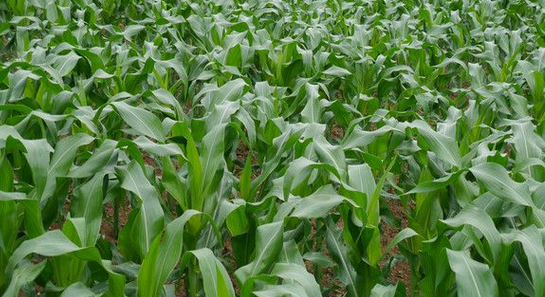Weeding in corn fields to prevent phytotoxicity
In recent years, the use of chemical herbicides in corn fields has been expanding. At the same time, due to factors such as man-made and weather, the number and area of ​​herbicide phytotoxics have also increased, resulting in reduced or even reduced yield of corn, resulting in damage to other adjacent crops. First, the main cause of phytotoxicity 1. Improper use. No special herbicide for corn field is used, or the selected dosage form is not correct. If the herbicide herbicide is used incorrectly in the corn seedling stage, it can cause damage to the corn field. 2. Improper use period. Maize is sensitive to pesticides at different growth stages. After weeding, corn is generally safer in the 3~5 leaf stage of corn. After 6-leaf stage, the corn leaf is sensitive to the drug and easy to cause phytotoxicity. 3. Improper use of the dose. At present, due to the root stalks left by the wheat fields, the large grasses and the drought, the herbicidal effect is poor. Farmers often deliberately increase the dosage, in order to improve the herbicidal effect, resulting in excessive drug use. 4. Improper spraying method. The spraying in the field is uneven, repeated use of drugs, resulting in excessive local drug dosage to produce phytotoxicity; hot noon medication, high temperature is easy to produce phytotoxicity; amide herbicides in the rainy days, high humidity, easy to produce phytotoxicity. 5. Improper use with other pesticides. For example, nicosulfuron can not be mixed with organophosphorus pesticides, and the plots of organophosphorus pesticides can not be used within 7 days before and after use. 6. The effect of the drop of the drug drop. For example, the drift of 2,4-D butyl ester is likely to cause damage to the surrounding cotton and beans; after the corn seedlings, the herbicides such as paraquat and glyphosate are used, and the drug is easily irritated by the evaporation of the liquid at high temperature. 7. Pesticide residues are too strong and too long to be used alone. For example, the herbicide Atrazine, which is commonly used in corn fields, has a large residual amount of soil, and long-term single use is easy to cause phytotoxicity to the lower crop. Second, the prevention and remediation of phytotoxicity 1. According to the corn crop, growth period and weeds, choose the herbicide on the road. After sowing, you can use B. sputum mixture. For example, there are more residual grasses in the wheat field, which can be mixed with paraquat. The seedlings are selected before the 5 leaves, and the paraquat is sprayed after 8 leaves. 2. Strict medication period. The use of 2,4-D butyl ester and Yu Nong Le should be carried out in the 3 to 5 leaf stage of corn. It is easy to produce phytotoxicity too early or too late. 3. Master the amount of medication. The drug instructions should be read carefully before use. The general drug will give a range of doses. The reasonable dosage should be determined according to the specific conditions of weeds and corn fields. The liquid preparation is made by the second dilution method. The original medicine is first made into the mother liquid, and then the water is thoroughly mixed well. At the same time, the concentration of the liquid is to be grasped. Generally, the amount of the liquid used per mu is 50-80 kg. 4. Improve spray technology. When spraying, pay attention to the types of crops planted around, such as beans, cotton and other sensitive crops, pay attention to stay away from the phytotoxicity caused by drifting; spray in reverse, spray should be uniform, no heavy spray does not leak; use When paraquat and other biocides are used, wear a protective cover, lower the sprayer's directional spray, and spray on the corn stems and leaves. 5. Pay attention to the weather when applying the medicine. Do not apply medicine on rainy days, avoid the hot noon application, master the sunny day before 9 am or after 5 pm, can improve the weeding effect. 6. Use a herbicide in a reasonable rotation. Avoid long-term single use of the same herbicide, causing the accumulation of phytotoxicity in the field. 7. Remedy for phytotoxicity. First, timely watering, spraying, and appropriate application of quick-acting fertilizers, can also be sprayed with 0.2% potassium dihydrogen phosphate or other plant growth promoters to increase plant resistance and alleviate phytotoxicity; Enhance soil permeability, promote root activity and absorption of water and fertilizer, and accelerate plant growth. Beard Straight Comb,Straight Beard Comb,Men Hair Straightening Comb,Electric Straight Hair Beard Comb Shenzhen Jie Zhong Lian Investment Co., Ltd. , https://www.szmeizon.com
